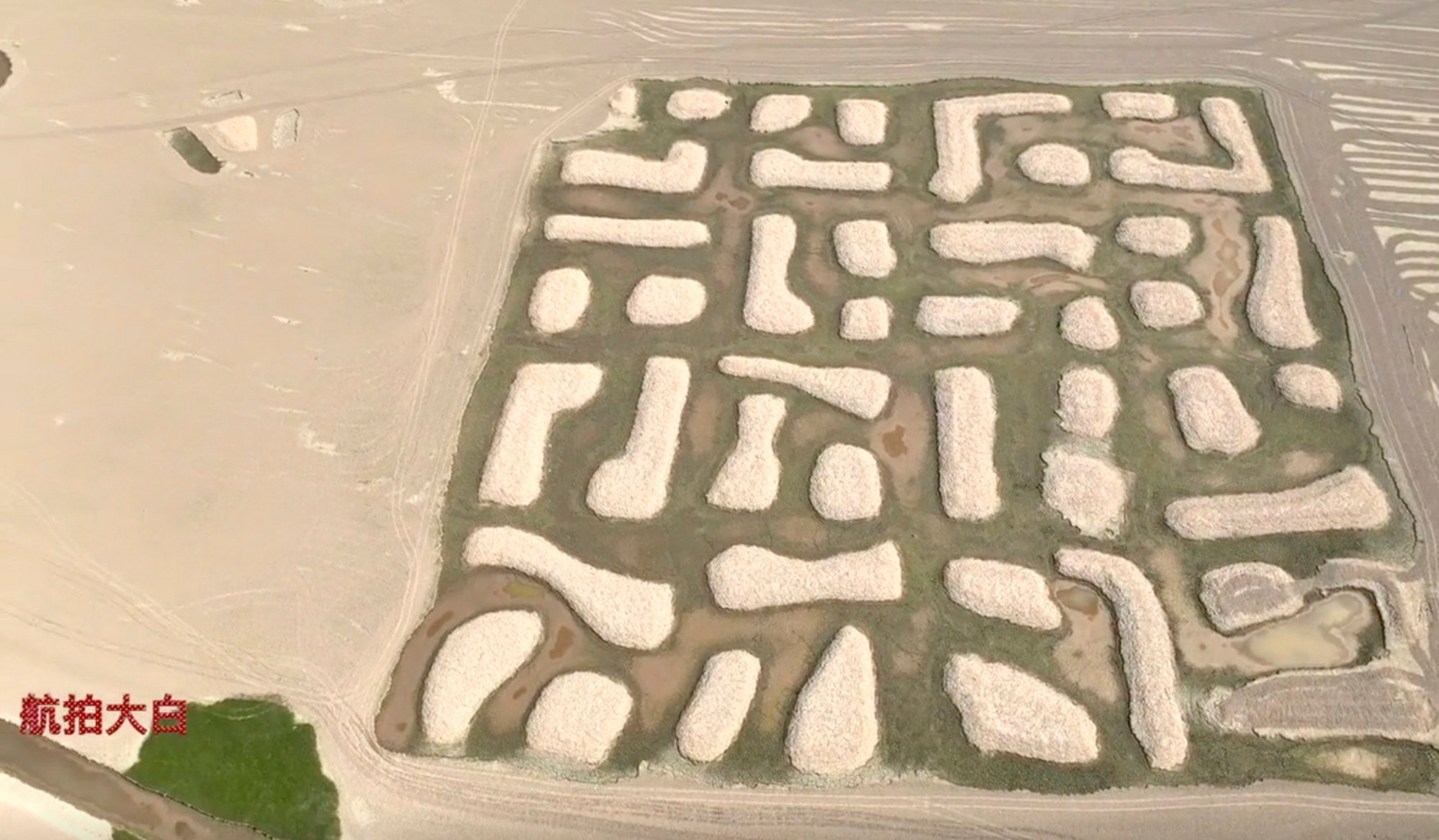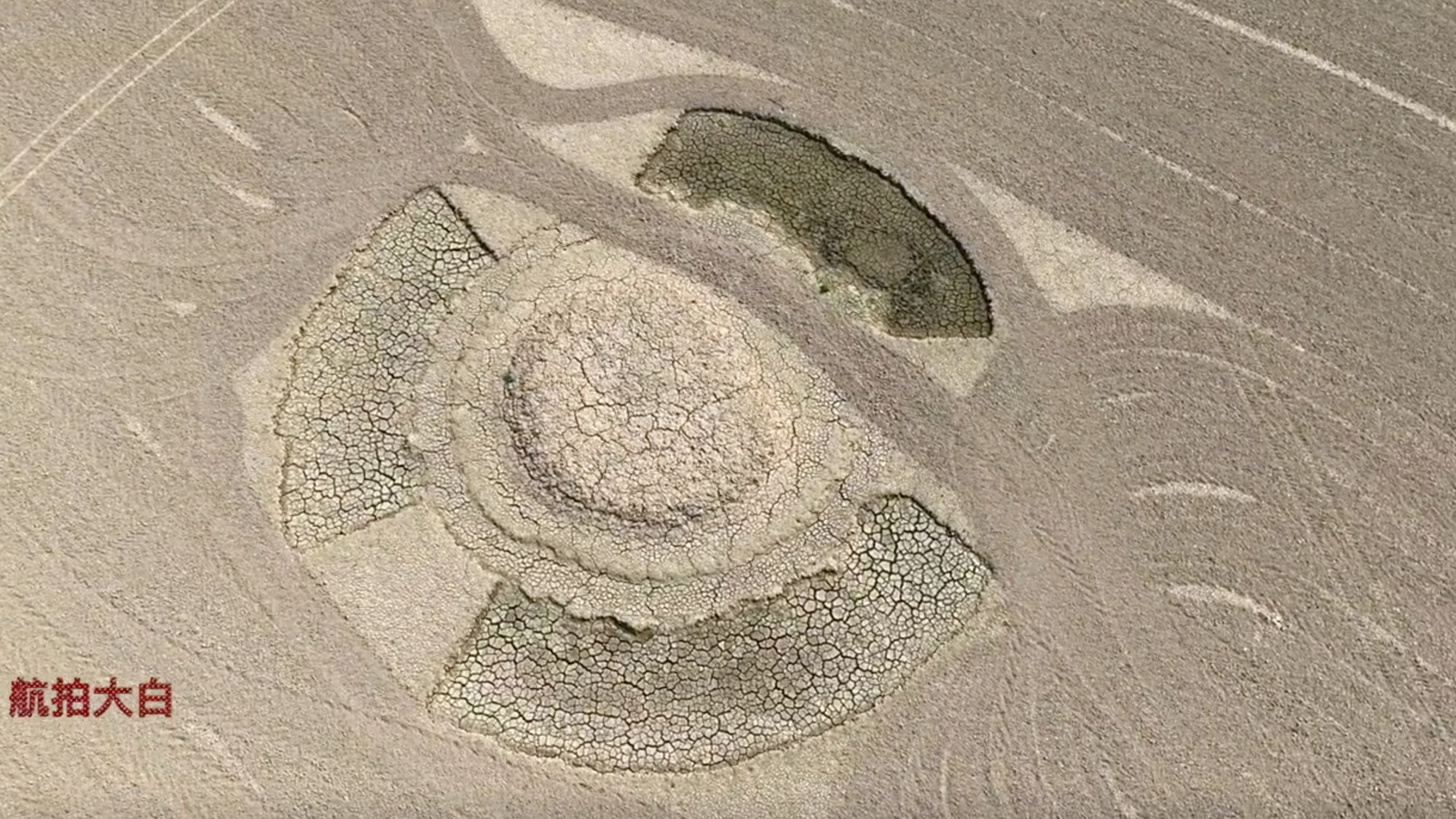
‘Definitely aliens’: drying Chinese lake bed reveals mysterious patterns which officials say are old fish traps but online conspiracy theories abound
- Bizarre patterns exposed on a lake floor in China by a recent drought have triggered speculation of aliens and ancient civilisations online
- Officials have dismissed the theories and said the area has always been underwater until recently and that the patterns are most likely old fish traps
Months of intense drought have caused 70 per cent of water to disappear from the 2,800 sq km Dongting Lake in Hunan, central China, exposing several square-shaped patterns on the lake bed’s red mudflats, the Beijing News reported.
A local resident, surnamed Hu, took aerial videos of the exposed patterns which he said looked like giant mazes.

“Those square blocks, with some straight patterns inside, look like mazes.”
Another resident, Yang Xinwei, said he didn’t think the patterns were made by human beings as he did not find any evidence of construction.
“It’s astonishing to see those patterns. Each block is as big as standard football fields, Inside those square blocks are special bone inscription-like patterns. Some strokes could be as long as 10 metres,” he said.
An official from the East Dongting Lake Management Committee dismissed the possibility of ancient tombs and said the area has always been underwater until recently, news site rednet.cn reported.
“We guess the signs are traces of former ai wei (meaning ‘short fences’ in English),” said the anonymous official, referring to fish traps built by fishermen years ago in shallower areas of the lake.

When the water rises fish are pushed into the enclosures and when it retreats the fish are trapped inside. The traps were dismantled in 2018 during a government campaign against illegal fishing.
Zhang Weijun, a water management specialist from Shanghai Yishui Environment Technology Company, said it’s possible that the patterns are former short fences for catching fish.
“Dongting Lake connects with the Yangtze River. Its water rises or falls as the water from Yangtze River enters or leaves the lake. So it’s much easier for fishermen to catch fish with this kind of trap,” Zhang told the South China Morning Post.
“But it’s not clear if the authorities approved this kind of fish catching activities many years ago,” he said.

The videos of the patterns have been viewed eight million times on Douyin alone, with many enthusiastically joining the speculation about what the patterns could be.
“Definitely alien civilisation,” wrote one user.
Another person said: “Don’t touch it. It’s the door to a secret underground chamber.”
Some were more concerned by the lake drying out than speculation about aliens.
“I don’t care what those special signs mean. What I am concerned about is that even Dongting Lake has dried up. Isn’t that a horrifying fact?” Wrote one person.
Dongting Lake is not the only body of water to fall victim to the extremely hot and dry weather in southern China this year.
Poyang Lake, the country’s largest freshwater lake, is now only 20 per cent of its normal size at this time of year. A high proportion of the exposed lake has become grassland as a result of the absence of water for so long, according to local residents.

